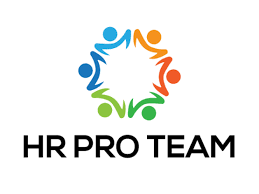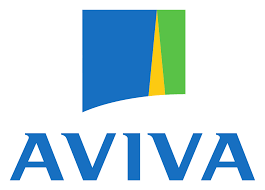We are pleased to include a sample Bullying & Harassment Policy that you can use in your business.
Remember to review and/or adapt this policy in accordance with company-specific requirements and all relevant legal considerations.
Bullying & Harassment Policy
Scope
All employees at [Insert Company Name Here]. The policy applies to employees both in the workplace and at work-related events, such as meetings, conferences, and social gatherings, whether on the premises or off-site.
The policy applies to bullying, harassment, and sexual harassment not only by fellow employees but also by clients, customers, or other business contacts to which an employee might reasonably expect to come into contact with in the course of their employment.
Policy statement on harassment, sexual harassment, and bullying
It is [Insert Company Name Here]’s policy that every employee has the right to carry out their duties free from any form of harassment, including sexual harassment and bullying. Harassment, sexual harassment, or bullying are totally unacceptable forms of behavior, are in many instances illegal, in breach of [Insert Company Name Here] policy, and will not be tolerated in the service. These forms of behavior harm professional working relationships, undermine morale, and damage efficiency in the workplace. [Insert Company Name Here] is committed to the development and maintenance of a positive working environment. An essential component of a positive working environment is treating colleagues with respect and dignity.
[Insert Company Name Here] has had a policy addressing sexual harassment for several years. However, since the development of the policy on sexual harassment, there has been increased recognition of other forms of harassment and bullying in all sectors of the economy. These are not new forms of destructive behavior; it is merely that there is increased awareness amongst management and employees that such behavior may take several forms (such as bullying) and is not confined to the arena of sexual harassment. It is in recognition of the increased awareness of other forms of destructive behavior and the need to actively tackle such behavior that the [Insert Company Name Here] is now producing a policy to combat all forms of harassment and bullying in the workplace.A positive working environment places obligations on management but also places responsibilities on all employees. All [Insert Company Name Here] employees must treat colleagues with respect. A positive working environment is not created merely through the introduction of policies on harassment, sexual harassment, and bullying – each [Insert Company Name Here] employee has a responsibility to ensure that such policies have a real effect in the workplace. The following rights and responsibilities of each employee underpin the policy on harassment, sexual harassment, and bullying:
the right of each [Insert Company Name Here] employee to a work environment which is free from harassment, sexual harassment, and bullying;
the right of each [Insert Company Name Here] employee to fair and prompt procedures in dealing with allegations of harassment, sexual harassmen,t and bullying;
The responsibility of each [Insert Company Name Here] employee to treat colleagues with dignity and respect and refrain from harassment, sexual harassment, and bullying;
The responsibility of each [Insert Company Name Here] employee is to support the policy on harassment, sexual harassment, and bullying by bringing instances where such behavior has occurred to attention at an early stage, not making spurious or frivolous complaints, and cooperating with an investigation, whether as complainant, the person complained of or as a witness.
Bullying
Bullying is a term used to describe certain forms of unacceptable behavior in the workplace. A working definition of bullying is offensive, abusive, intimidating, malicious, or insulting behavior, or abuse of power, conducted by an individual or group against others, which makes the recipient feel upset, threatened, humiliated, or vulnerable, which undermines their self-confidence, and which may cause them to suffer stress. As a behavior, bullying is generally persistent, systematic, and ongoing, and is a totally unacceptable behavior at [Insert Company Name Here].
Harassment
Harassment and sexual harassment carry inevitable legal consequences.
Harassment is defined as any act or conduct, including:
spoken words
gestures
the production, display, or circulation of written words, pictures or other material
Which is unwelcome and could reasonably be regarded as offensive, humiliating, or intimidating. Harassment by reference to particular characteristics flowing from difference in relation to marital status, family status, sexual orientation, religion, age, disability, race, or membership of a community is prohibited. Harassment may be perpetrated by a client, customer, or business contact of an employer, as well as by other staff members. It also provides that different treatment of a person in the workplace or in the course of employment, because of harassment, constitutes discrimination.
Sexual Harassment
Sexual harassment is defined as including all unwelcome and sexually, or otherwise on gender grounds, offensive, humiliating, or intimidating actions involving acts of physical intimacy, spoken words, gestures, or the production, display, or circulation of written material or pictures, or requests for sexual favours. Sexual harassment may be by a client, customer, or business contact of an employer, in addition to other staff members.
It should be noted that for the [Insert Company Name Here] procedures, sexual harassment includes same sex sexual harassment. Same sex sexual harassment will also, if proven, constitute a disciplinary offence.
Bullying
Behavior that constitutes bullying can occur across the organisational and management structure of a department or office. It can occur within peer groups (staff of the same grade), from management to staff, and from staff to management. Bullying may be categorised in several forms:
manipulation of the victim’s reputation by rumour, gossip, ridicule, and/or innuendo;
preventing the victim from speaking by using aggressive and/or obscene language;
social exclusion or isolation;
intimidation;
manipulating the nature of the work or the ability of the victim to perform the work, for example, by withholding information or setting meaningless tasks;
physical abuse or threats of abuse.
How does bullying manifest itself?
Bullying can take several forms in the workplace. Some examples of blatant bullying of departments that should be aware of are the following:
aggressive behavior or shouting, usually over relatively unimportant matters;
swearing or other forms of demeaning name-calling;
insulting or unnecessarily commenting on the appearance of another person;
making an individual, his or her beliefs or opinions, the butt of jokes or uncomplimentary remarks which are likely to offend;
physically attacking, threatening to attack, or acting menacingly towards another person;
deliberately ignoring or excluding an individual on a persistent basis;
unwarranted or disproportionate criticism, unsupported by facts, of an individual’s work performance.
Departments should also be mindful of less obvious forms of bullying, which might not be readily identifiable. Examples of such forms of bullying might include:
deliberately and maliciously withholding work-related information to undermine a colleague;
spreading malicious gossip;
subjecting an individual to unreasonable scrutiny;
undermining the authority of a colleague in the workplace;
setting unreasonable or impossible deadlines or tasks.
As previously indicated, these examples are indicative rather than exhaustive and are not intended to suggest that management should not take appropriate action in relation to other forms of bullying.
Appropriate Monitoring of Performance
The monitoring, review, and evaluation of performance are essential parts of the management function. All managers at [Insert Company Name Here] are responsible for monitoring the performance of their staff effectively. It is the duty of management to be open with staff about performance, attendance, or general conduct. Effective management may require critical comments to individuals about issues relevant to their official duties. However, such criticism should not be personalised but directed against the conduct or performance of a member of staff. Bullying does not arise when critical comments are made honestly and constructively, are backed up by clear facts, and are imparted reasonably.
Harassment
Harassment may be characterised as a form of bullying behavior which is directed against an individual because of his or her marital status, family status, sexual orientation, religion, age, disability, race, or membership of a particular community.
Understanding Sexual Harassment
Sexual harassment is offensive, humiliating, or intimidating behavior that is characterised by a sexual or gender dimension and will not be tolerated by management at [Insert Company Name Here]. In addition to the forms of behavior previously outlined, sexual harassment will include the following forms of behavior:
unsolicited, unreciprocated behavior of a sexual nature to which the recipient objects;
unwanted physical contact;
lewd or suggestive behavior, whether verbal or physical;
sexually derogatory statements or sexually discriminatory remarks;
The display of pornographic or sexually explicit material in the workplace.
A person of the same sex may equally commit sexual harassment as the victim.
HUMAN RESOURCE DEPARTMENT AVAILABILITY
If a member of staff is subject to harassment, sexual harassment, or bullying, they may wish to seek personal support and assistance. Similarly, a member of staff against whom such a complaint has been made may need individual support and assistance. Staff in such circumstances may wish to avail themselves of the help and support available from the Human Resource Department.
The Human Resource Department also provides work-based support services, designed to assist employees in managing personal difficulties. It offers confidential assistance, where appropriate, and a wide range of support to staff regarding individual or job-related issues. While the Department does not aim to provide a professional counselling service, some officers are skilled and trained in counselling techniques, enabling them to deal confidently and appropriately with staff who avail of the service. Where the Human Resource Department Manager considers that a problem could best be addressed by referral for professional help, they have information about the range of professional services available and can assist in arranging an onward referral, should the staff member so wish.
Any discussion between a self-referred [Insert Company Name Here] employee and the Human Resource Department is generally private. Third parties will not be involved without the prior knowledge and consent of the client, except in life-threatening situations or when the Human Resource Department Officer becomes aware of a breach of criminal law, or in similar situations where concealment of information would compromise the Human Resource Department.
Creating a harassment, sexual harassment, and bullying-free environment
There is no reason to believe that the incidence of harassment, sexual harassment, and bullying in the [Insert Company Name Here] is any greater than in other areas of the private or public sectors. However, the need for a structured approach to identifying and addressing such problems is self-evident. Such an approach will also ensure confidence amongst staff that issues of harassment, sexual harassment, and bullying will be addressed effectively.
It is recognised that harassment, sexual harassment, and bullying can have several severe consequences:
The psychological or physical welfare of the victim may be damaged in a variety of different ways, such as physical illness, depression, loss of confidence, and/or self-esteem.
The capacity of the victim to give of her or his best in work terms may be seriously diminished and consequently may adversely impact her or his career prospects;
The working environment may also be damaged for those not directly involved.
Harassment, sexual harassment, and bullying are, therefore, problems not just for the victim, but also for her or his colleagues and for the management in the department or office in which she or he works, and may also impact the family life of a victim.
The introduction of this policy on harassment and bullying is not, in itself, sufficient to ensure that the work environment is free from all forms of harassment, including sexual harassment and bullying. The maintenance of discipline and of proper standards in the workplace is primarily the responsibility of management. [Insert Company Name Here] management should adopt a proactive approach to ensuring the workplace is free of harassment, sexual harassment, and bullying. Departmental Managers must formally remind staff managers and supervisors of their responsibilities in generating a harassment, sexual harassment, and bullying-free environment within their own areas.
Managers and supervisors are obliged to uphold these guidelines as an integral part of their responsibilities. To this end, managers and supervisors will be expected to:
(i) ensure that all members of staff are informed and aware of these guidelines;
(ii) take seriously any complaints of harassment, sexual harassment or bullying which are made to them;
(iii) take appropriate action when any incidents of harassment, sexual harassment or bullying arise in their areas; and
apply the procedures set out in these guidelines.
Departmental Managers must also notify the Human Resource Department of their specific duties arising from these guidelines in relation to the fair and thorough investigation of any complaints of harassment, sexual harassment or bullying that may be referred to them.
Department Managers should develop appropriate training initiatives, including the training of investigating officers, to counteract harassment, sexual harassment, and bullying.
THE INVESTIGATION OF COMPLAINTS OF HARASSMENT, SEXUAL HARASSMENT, AND BULLYING
All complaints of harassment, sexual harassment, and bullying must be taken seriously by both the line manager and the Human Resource Manager, with due regard for the sensitivities of the complainant and the rights of the person against whom the complaint has been made. All complaints must be dealt with promptly and sympathetically. To the extent possible, a complaint of harassment or bullying will be handled in confidence. However, it is not possible to guarantee anonymity to individuals who report harassment, sexual harassment, or bullying, or participate in an investigation. The principles of natural justice require that a person who is accused of harassment, sexual harassment, or bullying be given sufficient details of the allegations to defend herself or himself adequately.
What should a victim of harassment, sexual harassment, or bullying do?
An employee who considers that she or he is being harassed, sexually harassed, or bullied should:
Where possible, make it clear to the offending staff member that the behavior is offensive.
Keep a record of each incident of harassment, sexual harassment, or bullying as it occurs and request witnesses, if any, to note them also – a person who considers that she or he has been harassed, sexually harassed or bullied may, of course, make a complaint after the first occurrence;
Report the matter to their line manager or, if the line manager is the person against whom the complaint is being made, report it to the second supervisor. The line manager/second supervisor shall, where appropriate and with the consent of the complainant and the person against whom the complaint is made, seek to resolve the matter locally. Suppose it is not possible to resolve the matter locally in a manner acceptable to both the complainant and the person against whom the complaint has been made. In that case, the line manager/second supervisor shall report the complaint to the Human Resource Department.
it is recognised that circumstances may occasionally exist where, for good reasons, a victim cannot pursue her or his complaint through the line management structure. In such circumstances, the complainant may bring their case directly to the Human Resource Department Manager.
What should the Human Resource Officer do when she or he receives a complaint?
Suppose the Human Resource Department, on receipt of a complaint of harassment, sexual harassment, or bullying, considers that the behavior may constitute a criminal offence (e.g., indecent assault or assault). In that case, she or he should ascertain whether the matter is, or is likely to be, the subject of an investigation by the police. If the matter is to be investigated by the police, the Human Resource Manager should contact them to seek advice on whether or not to proceed with the departmental investigation. The internal investigation procedure should continue where the police advise that it is appropriate to do so.
Informal Procedure
The Human Resource Department shall, on receipt of a complaint of harassment, sexual harassment or bullying, initially, where appropriate, seek to resolve the matter informally with the consent of the parties involved. However, suppose the complaint is reported to the Personnel Officer by a line manager/second supervisor who has previously attempted to resolve the matter, and the parties to the complaint do not consent to an informal resolution. In that case, they shall proceed immediately to institute an investigation.
A Human Resource Officer should not try to informally resolve a complaint of harassment, sexual harassment or bullying himself or herself but should refer the dispute to another senior officer (Human Resource Manager), or such other person as may be agreed, for mediation. Involvement by the Human Resource Officer in any attempt at informal resolution may, if such an attempt were unsuccessful, prejudice his or her role in any subsequent disciplinary proceedings, should they arise from the complaint.
The Investigation Procedure
The purpose of an investigation is to determine the facts and assess the credibility of a complaint of harassment, sexual harassment, and bullying. Where an investigation is carried out, the following procedures should be followed:
On receipt of a complaint of harassment, sexual harassment, or bullying, the Human Resource Department shall, if both parties to the complaint have not agreed to resolve the matter informally, promptly notify the complainant and the person against whom the complaint has been made in writing:
that she or he has been informed of the case and that an investigation will commence within 15 days; and
the basis for the investigation and the procedure to be followed
Suppose a complaint of harassment, sexual harassment, or bullying is not made in writing. In that case, the Human Resource Department should document the complaint in writing and ask the person who made the complaint to confirm the accuracy of the statement before proceeding with an investigation.
The Human Resource Department should, within 15 days of receiving the complaint, appoint an officer to investigate it. It may be appropriate in certain circumstances to appoint two officers as an investigation team in respect of a complaint. In cases of sexual harassment, two officers should be appointed to investigate a complaint, one female officer and one male officer. It may also be appropriate to appoint an officer or officers from another department or an individual from outside the [Insert Company Name Here] to investigate a complaint. When two officers are appointed to conduct an investigation, both should be involved at all stages of interviewing witnesses and parties to the complaint.
The officer or officers appointed to investigate a complaint of harassment, sexual harassment, or bullying should have the necessary authority and expertise to ensure that the complaint is thoroughly investigated. An investigator should be a person of tact and trustworthiness, and should have received training in investigating complaints of harassment, sexual harassment, and bullying.
It is advisable to record the statements in writing from all parties involved in the investigation, as the use of written statements tends to clarify matters from the outset of the inquiry and maintains clarity throughout the procedure. Those who make statements to the investigator(s) should be given copies of the record of their statements. Where there is disagreement on the content of the statement, such a dispute should be recorded.
All parties to an investigation should continue to work, usually, if possible, throughout the investigation.
Interview with the complainant
The investigator(s) should initiate the investigative process by conducting a thorough interview with the complainant to gather the facts behind the complaint. It is essential that the investigator clearly indicate to a complainant that they are not a counselor. Where a complainant seeks counselling or he should be directed to the Human Resource Department Service. It should also be clearly indicated to the complainant that the investigation must follow fair procedures, taking into account the rights of both the complainant and the person against whom the complaint has been made. The investigator(s) should seek to discover:
what precisely occurred;
who was involved;
when the incident(s) occurred;
where the incident(s) occurred;
whether there were any witnesses to the event(s);
any other relevant information.
The complainant should be requested not to discuss the case with any other party to the investigation. They have the right to be accompanied/represented at interviews held during the investigation (e.g., by a selected manager). However, it would not be appropriate for such an accompanying person to be a witness who will also be interviewed or make a statement during the course of the investigation. The complainant should be informed that a copy of her or his statement will be furnished to the person against whom the complaint has been made.
Interview with the person against whom the complaint has been made
The investigator(s) should hold a thorough interview with the person against whom the complaint has been made. It is essential that the investigator clearly inform the person against whom a complaint has been made that they are not a counselor. Where counselling is sought, the individual should be directed to the Human Resource Department. It should also be clearly indicated to a person against whom a complaint has been made that the investigation must follow fair procedures, taking into account the rights of both the person against whom the complaint has been made and the complainant. The person against whom the complaint has been made must be:
advised in sufficient detail on the allegations against him or her and given a copy of the complainant’s written statement in advance of the interview;
Given an opportunity to answer the allegations in writing, if she or he so wishes, to the complaints made, this may be done in advance of any interview;
allowed to comment on the alleged incident(s) from her/his perspective and to comment on the detailed statement of the complainant;
asked whether there were any witnesses to the alleged events.
The person against whom a complaint has been made should be requested not to discuss the case with any other party to the investigation. They have the right to be accompanied/represented at interviews held during the investigation (e.g., by a selected manager). However, it would not be appropriate for such an accompanying person to be a witness who will also be interviewed or make a statement during the course of the investigation.
Suppose the complainant requests a copy of the statement of the person against whom a complaint has been made. In that case, such should be provided where the investigating officer(s) is of the view that there would be unfairness to the complainant if she or he did not have a copy of the statement. The crucial factor is whether each side knows fully what case is being made by the other side.
Interviews with witnesses
Following the interviews with the complainant and the person against whom the complaint has been made, the investigator should approach the witnesses named by either party to obtain their account of what transpired. Witnesses should only be given sufficient information to allow the investigating officer(s) to determine what occurred in relation to the allegation. Witnesses may be accompanied/represented at interviews held during the investigation (this may include a family member, friend or manager). However, it would not be appropriate for such an accompanying person to be a party to the investigation or another witness who will also be interviewed or make a statement during the course of the investigation. In addition, witnesses should be informed that they are not to discuss the case with any other party. Witnesses should be asked:
What precisely occurred?
who was involved;
when the incident(s) occurred;
where the incident(s) occurred;
whether there were any other witnesses to the event(s).
The complainant and the person against whom the complaint has been made should be given an opportunity, where appropriate, to comment on the statements, if any, made by witnesses.
Confidentiality
If a person demands that information provided to an investigating officer(s) remain confidential, there is no legal duty to maintain confidentiality. Where the investigating officer(s) is of the view that natural justice (such as each side being fully aware of the case being made against him or her) requires disclosure, such obligation may override any undertaking of confidentiality.
Conflicting Accounts
Where the investigator(s) are faced with two conflicting accounts of the alleged incident and where no witnesses are available or where their evidence is not persuasive, the case rests upon which version of events the investigator(s) consider the more credible. In this regard, it is crucial to examine the details of the evidence and the consistency of the story presented by each side.
Principles to be observed by the investigator(s)
The investigator(s) must avoid discussing the case with any person, either within or outside of the workplace, other than those to whom she or he must speak in the course of the investigation and to the Human Resource Department.
During the course of the investigation, the investigator(s) should not indicate her or his views about the credibility or otherwise of:
The complaint itself, or
The evidence given by the complainant, the person against whom the complaint is made, or any witnesses.
The investigator(s) should refuse to be drawn into any speculation with any party as to the likely outcome of the investigation.
Due regard must be had at all stages of the investigation to the rights of the complainant, the person against whom a complaint was made, and any witnesses, particularly their constitutional right to the protection of their good names, bearing in mind that a complaint is no more than an allegation unless and until the investigation has satisfactorily established the facts.
The investigator should maintain a record of all interviews/meetings held during the investigation.
The investigation should ideally be completed within 21 working days of the officer’s appointment to investigate the complaint. If the investigation is not completed within 14 days, both the complainant and the person against whom the complaint was made should be informed that the investigation is ongoing.
Should the investigating officer(s) or any person become aware that any attempt has been made to persuade the complainant or any witness to drop the case or change her or his evidence, the matter should be reported immediately to the Human Resource Department. Any such interference will be regarded as a serious breach of discipline. Any attempt at interference or victimisation in the case of harassment or sexual harassment may also constitute an offence.
On completion of the investigation
When the interviews have been completed, the investigating officer(s) shall submit a report to the Human Resource Department Officer within 14 days. This report shall include the conclusions of the investigator on the credibility or otherwise of the allegations.
On receipt of the report from the investigating officer(s) the Human Resource Department Officer shall satisfy her/himself that all appropriate steps have been taken to carry out a thorough and impartial investigation. The Human Resource Department Officer shall consider whether, having regard to the report of the investigating officer(s), the complaint is upheld and shall inform the complainant and the person against whom the complaint was made of the outcome of the investigation.
The time limits provided in the investigative procedure may be extended by the Human Resource Department Officer where there is a good reason to do so. The time limits may also be extended by agreement between the parties and the Human Resource Department Officer.
Action where the complaint is upheld
If the complaint is upheld, the Human Resource Department Officer, having regard to the nature of the behavior alleged, the report of the Investigating Officer(s), and any other appropriate information, shall decide whether the matter should be pursued as a disciplinary issue.
If the matter is to be pursued as a disciplinary issue, the Human Resource Department Officer shall follow the appropriate procedures.
Suppose the Human Resource Department Officer decides that the matter should not be pursued as a disciplinary issue. In that case, they shall determine whether any further action is warranted in relation to the complaint. If so, the Human Resource Department Officer shall take such action as she or he considers appropriate, such as issuing a written reprimand or an unwritten warning. The Human Resource Department Officer should also keep the situation under review for a specified period. If no action is taken, the Human Resource Department Officer should write to the complainant, stating the reasons for their decision and informing the complainant of their right to appeal. It may be appropriate in certain circumstances to refer a person against whom a complaint has been made to counseling, retraining, or support services regarding their behavior. However, departments mustn’t merely transfer the problem to another area of the service.
The Human Resource Department Officer shall inform the complainant of any action that is to be taken. If the matter is to be pursued under the Disciplinary Policy, the Human Resources Department Officer shall inform the complainant as to whether disciplinary action was eventually taken.
Action where the complaint is not upheld
Even if the complaint is not upheld, staff can be assured that bona fide complaints will not be viewed as malicious. While a malicious complaint will generally be treated as serious misconduct under the disciplinary procedure, this provision should not deter employees from forwarding genuine complaints.
A complainant may wish to be transferred to another section following an investigation into an incident of harassment, sexual harassment, or bullying, irrespective of whether the complaint has been upheld. Such a transfer should only occur when a complainant has expressed a desire for a transfer. A department must ensure there is no victimisation or appearance of victimisation of a complainant following an investigation.
What can the complainant do if she/he is not satisfied with the conduct of the investigation or the outcome?
There should be a senior designated officer (at the Director level, where possible) to review cases of harassment, sexual harassment, and bullying. The complainant may refer the matter to the senior designated officer for review, stating in writing the grounds on which they are not satisfied with the conduct of the investigation or the outcome. The senior designated officer shall inform the complainant of her or his decision to review the investigation or its outcome, or that, in their view, there are no grounds for such a review, within 14 days of receiving the written request from the complainant for such a review.
What can the person against whom the complaint is made do if he/she is not satisfied with the conduct of the investigation or the outcome?
The same avenues as outlined above are open to the person against whom the complaint is made.
Where the person against whom a complaint has been made is a member of the Human Resource Department?
A Principal Officer should be assigned to perform the functions of the Human Resource Officer set out in these guidelines in relation to a complaint of harassment, sexual harassment or bullying where such a complaint has been made against the Human Resource Department Officer.
RESPONSIBILITIES
DEPARTMENT OF HUMAN RESOURCES
The Department of Human Resources is responsible for the following:
Maintaining and overseeing all Bullying, Harassment, and Sexual Harassment Policy at [Insert Company Name Here]
Initiating or recommending immediate action in response to circumstances where warranted.
Analysing and reporting Bullying, Harassment, and Sexual Harassment information regularly with recommendations for addressing problems/issues identified.
Ensuring the confidentiality of all Bullying, Harassment, and Sexual Harassment information once they are received in the Department of Human Resources.
EMPLOYING DEPARTMENT
Employing Departments are responsible for the following:
Ensuring that the Human Resources Department is informed immediately of all Bullying, Harassment, and Sexual Harassment issues.
Managing all documentation associated with the Bullying, Harassment, and Sexual Harassment Policy process.
Initiating follow-up action where appropriate.
EMPLOYEES
Employees are responsible for informing their managers and Human Resources of all incidents of Bullying, Harassment, and Sexual Harassment at [Insert Company Name Here]
REPORTING
The Department of Human Resources will submit a Bullying, Harassment, and Sexual Harassment Policy report to the Chief Executive Officer on a regular basis.
Any actions the Human Resources Department deems necessary to address any concerns.
REVIEW OF PROCEDURE
This Procedure will be reviewed within twelve months of its initial implementation.









![Launch Powerful Leadership Skills Training Programs With Zero Fuss — Your Complete Workshop Kit, Ready In Minutes [Sale Now On]](https://www.oakinnovation.com/wp-content/uploads/2022/06/christopher-campbell-rDEOVtE7vOs-unsplash-1-scaled-jpg-350x250.webp)
















































